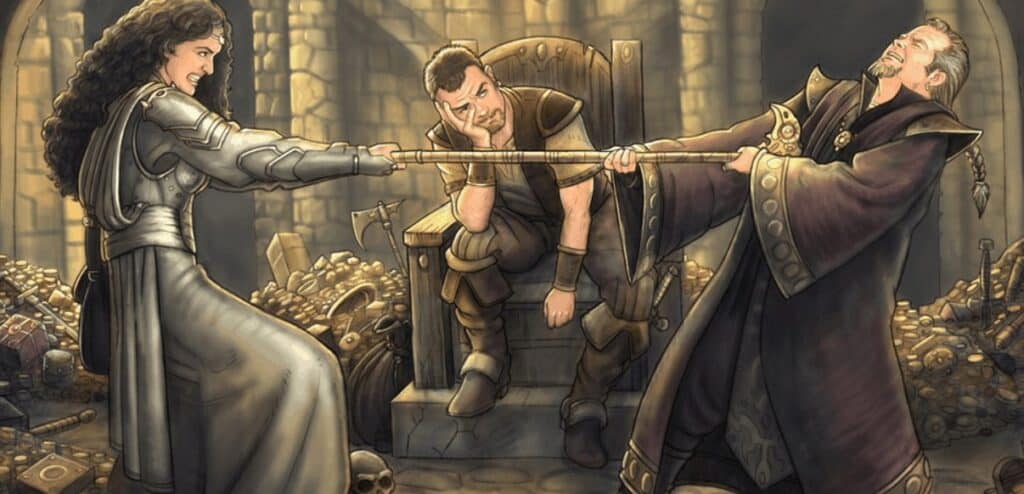Introduction
Lesser Restoration 5e Guide: How Does it Work?, Dungeons & Dragons (D&D) 5th Edition offers a plethora of spells and abilities that can turn the tide of a battle or aid your party in various situations. One such spell is “Lesser Restoration.” In this guide, we will explore the mechanics and applications of Lesser Restoration in the context of D&D 5th Edition, providing players and Dungeon Masters (DMs) with a comprehensive understanding of how this spell works and when to use it.
Understanding Lesser Restoration
Lesser Restoration is a 2nd-level spell in D&D 5e that is primarily associated with the Cleric class, although some other classes can also access it through multi-classing or certain feats. The spell’s description in the Player’s Handbook reads as follows:
Must Read=What is the Russell Wilson cheating controversy?
“Lesser Restoration: You touch a creature and can end either one disease or one condition afflicting it. The condition can be blinded, deafened, paralyzed, or poisoned.”
Key Components of Lesser Restoration
- Casting Time: Lesser Restoration has a casting time of 1 action, which means it can be performed quickly in the midst of combat or other time-sensitive situations.
- Range: The spell has a range of touch, which means the caster must make physical contact with the target.
- Components: Lesser Restoration requires verbal and somatic components, as well as a small amount of diamond dust as a material component, which is consumed during the casting.
- Duration: The effects of Lesser Restoration are immediate and do not require concentration.
- Available to: Clerics automatically have access to Lesser Restoration as they level up, but it can also be acquired through other classes such as Paladins or Druids.

Applications of Lesser Restoration
- Curing Conditions: Lesser Restoration is highly effective in removing certain debilitating conditions from a creature, including blindness, deafness, paralysis, and poison. These conditions can greatly hinder a character’s combat abilities or their overall effectiveness in the game.
- Disease Removal: In addition to conditions, Lesser Restoration can also cure diseases. Whether your character has contracted a disease from a noxious swamp or a rat-infested dungeon, this spell can come to the rescue.
- Versatility: The versatility of Lesser Restoration is a significant advantage. In a dynamic game like D&D, being able to address a variety of conditions and diseases can make a Cleric or other spellcaster an invaluable asset to the party.
- Roleplay Opportunities: Beyond its combat applications, Lesser Restoration can offer roleplaying opportunities. Helping a fellow player character or an NPC in distress by removing a debilitating condition or disease can lead to meaningful in-game interactions.
When to Use Lesser Restoration
The decision of when to use Lesser Restoration in a D&D game can vary depending on the specific circumstances. Here are some scenarios in which this spell can be particularly useful:
- In Combat: During battles, Lesser Restoration can be used to quickly remove conditions such as paralysis, which can incapacitate a party member and turn the tide of battle.
- After Poisonous Encounters: When your party faces creatures that inflict poison damage or poison conditions, Lesser Restoration can provide immediate relief, preventing further harm.
- Exploration and Survival: When your group is navigating hazardous environments or exploring the wilderness, diseases or conditions can easily be contracted. Having a character who can use Lesser Restoration is a valuable asset.
![Pass Without Trace 5e [7 Ways To Use The DnD Spell, DM Tips, Rule Guide] - DnD Lounge](https://www.dndlounge.com/wp-content/uploads/2022/03/phantasmal-force-5e.jpg)
- Supporting Allies: As a support spellcaster, you can use Lesser Restoration to assist your allies when they are affected by debilitating conditions. This can boost the morale of your party and enhance your teamwork.
Conclusion
In Dungeons & Dragons 5th Edition, Lesser Restoration is a spell that can make a substantial difference in the outcome of encounters and enhance the overall gaming experience. Whether you are a player or a Dungeon Master, understanding the mechanics and applications of Lesser Restoration is essential for making the most of this versatile and powerful spell. By using it judiciously, you can help your party overcome challenges and ensure a successful adventure in the world of D&D.

